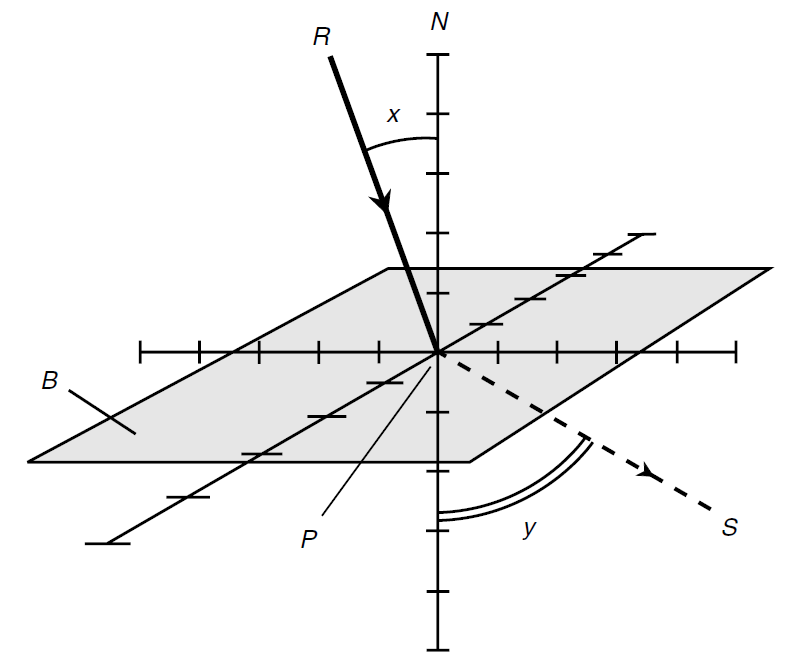


 الفيزياء الكلاسيكية
الفيزياء الكلاسيكية
 الكهربائية والمغناطيسية
الكهربائية والمغناطيسية
 علم البصريات
علم البصريات
 الفيزياء الحديثة
الفيزياء الحديثة
 النظرية النسبية
النظرية النسبية
 الفيزياء النووية
الفيزياء النووية
 فيزياء الحالة الصلبة
فيزياء الحالة الصلبة
 الليزر
الليزر
 علم الفلك
علم الفلك
 المجموعة الشمسية
المجموعة الشمسية
 الطاقة البديلة
الطاقة البديلة
 الفيزياء والعلوم الأخرى
الفيزياء والعلوم الأخرى
 مواضيع عامة في الفيزياء
مواضيع عامة في الفيزياء|
Read More
Date: 7-3-2016
Date: 27-12-2020
Date: 8-3-2016
|
DETERMINING THE CRITICAL ANGLE
Refer again to Fig. 1. The light passes from a medium having a relatively higher index of refraction r into a medium having a relatively lower index s. Therefore, r s. As angle x increases, angle y approaches 90°, and ray S gets closer to the boundary plane B. When x, the angle of incidence, gets large enough (somewhere between 0° and 90°), angle y reaches 90°, and ray S lies exactly in plane B. If angle x increases even more, ray R undergoes total internal reflection at the boundary plane B. Then the boundary acts like a mirror.
The critical angle is the largest angle of incidence that ray R can subtend relative to the normal N without being reflected internally. Let’s call this angle xc. The measure of the critical angle is the arcsine of the ratio of the indices of refraction:
xc = sin-1 (s/r)

Fig. 1. A ray passing from a medium with a relatively higher refractive index to a medium with a relatively lower refractive index.



|
|
|
|
بـ3 خطوات بسيطة.. كيف تحقق الجسم المثالي؟
|
|
|
|
|
|
|
دماغك يكشف أسرارك..علماء يتنبأون بمفاجآتك قبل أن تشعر بها!
|
|
|
|
|
|
|
العتبة العباسية المقدسة تواصل إقامة مجالس العزاء بذكرى شهادة الإمام الكاظم (عليه السلام)
|
|
|